If you live in a town or village, you probably have a long narrow town garden – shady, over-looked and lacking in space.
But whatever your gardening style – classic, wildlife, jungle or romantic – you can still achieve an amazing garden in spite of the restrictions.
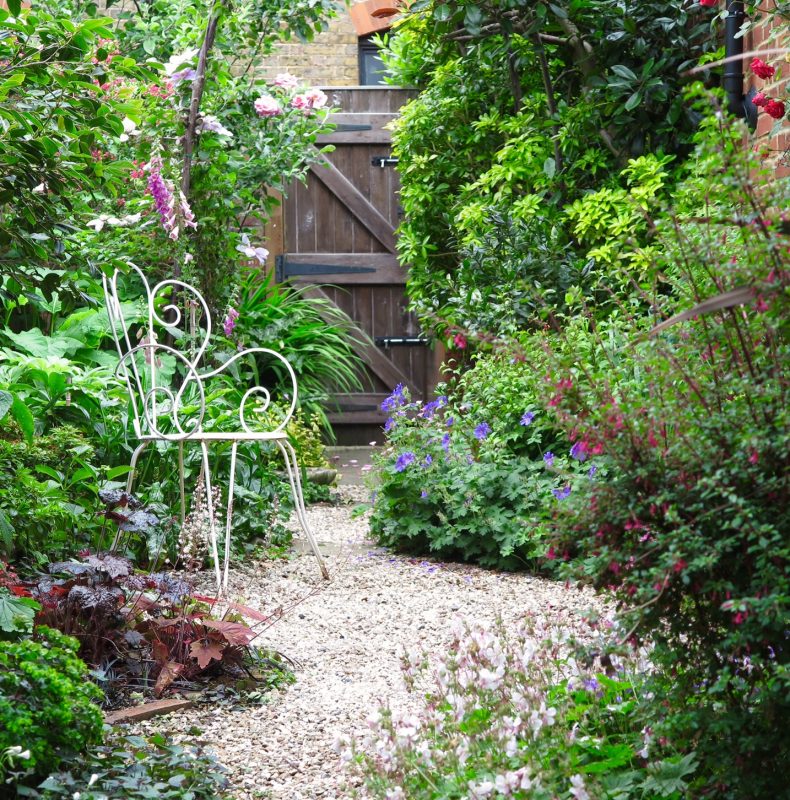
Lush planting and a gravel path make up for the lack of space in Genevieve Ellis’s garden (Garden 5 in the Faversham Open Gardens).
Next weekend (26th June 10am-5pm) is the Faversham Open Gardens & Garden Market Day. Thirty-six town gardens will be open, so I’ve picked out a few that make the most of the classic narrow rectangular urban garden shape. All gardens will be open on Sunday 26th June unless otherwise stated.
You don’t need a lawn
If your garden is long and thin, the path can be the main design anchor, the focal point and create the shape of the garden.
If you’ve been in a Victorian terraced house, you’ll be familiar with the ‘side return’ – the narrow strip of outside space that runs alongside the back extension. Many people now extend the back of the house from garden wall to garden wall, roofing over the ‘side return’, bringing it into the house and enlarging the room at the back.
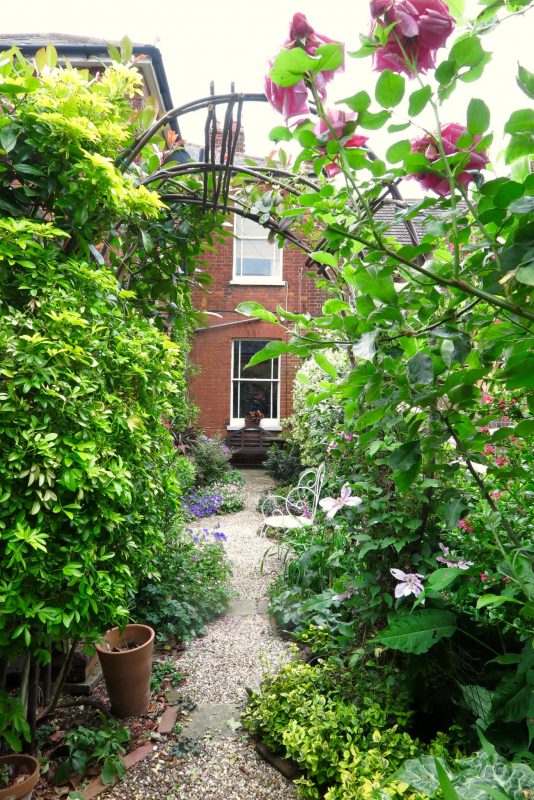
Looking back towards Genevieve’s house from the garden gate at the end.
But the side return is almost the whole of Genevieve Ellis’s garden and she has made the most of it.
The space is only around 7ft wide, and is essentially a gravel and stone garden path which runs down the middle and widens out into a circle at regular intervals. There is charming planting on either side, and two places to sit.
2) The path is the key to a narrow town garden
Genevieve’s garden is made by her choice of path. If you have a sprawling country garden, paths are ways of getting from A to B in the most logical way. In a long, thin urban garden, your choice of path will make a big difference to how the space works and what the garden looks like.
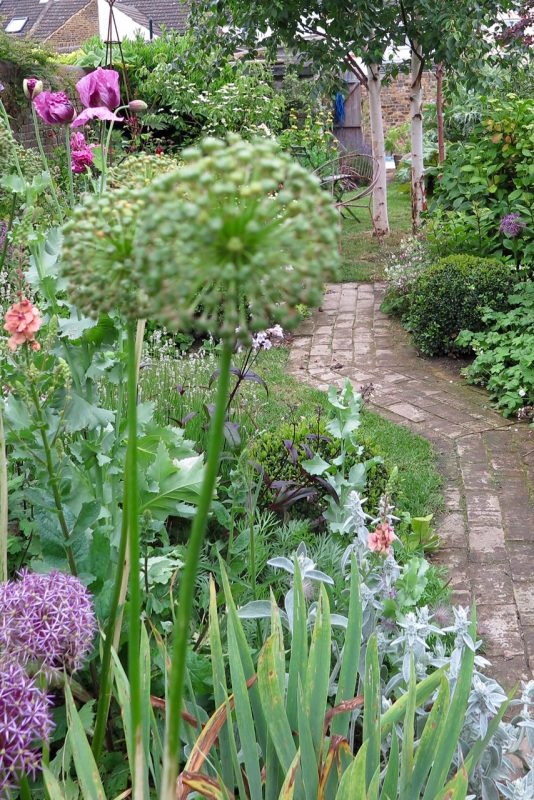
This brick path starts on the right of Posy Gentles’ garden (Garden 3), giving her a big border to the left. It then bends to the left and gives her another big border on the right.
The offset path is one of the most successful strategies. The two paths above and below start on one side of the garden and either bend or turn. An offset path gives you the option for deeper beds and lush planting.
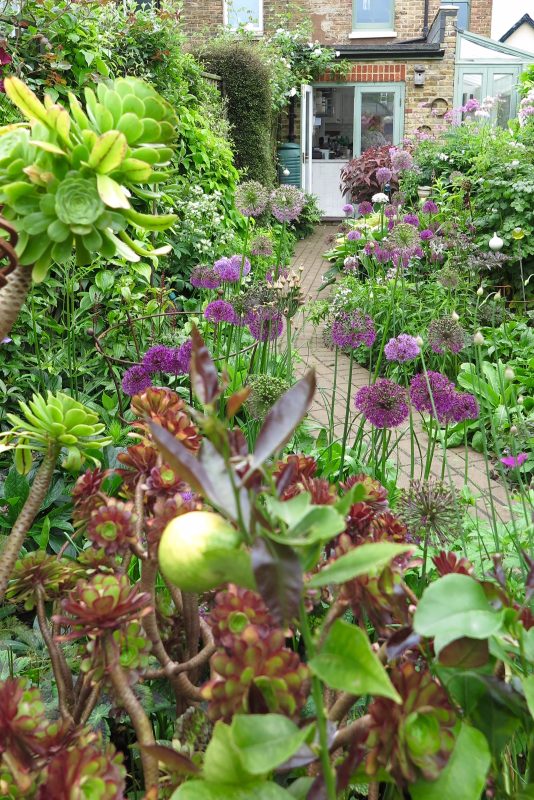
This garden was the smallest garden open for the Whitstable Open Gardens (so not open for Faversham Open Gardens). Probably only about 15ft wide and 60ft long, its winding path creates space for lavish planting, places to sit, and a greenhouse.
4) You can have large plants in a small garden
Mary Mackay’s garden has a tropical atmosphere. Her garden is probably around 25ft wide and 50ft long, but she has a giant cordyline, huge bamboos in pots, great silver-leafed cardoons, tetrapanax and more.
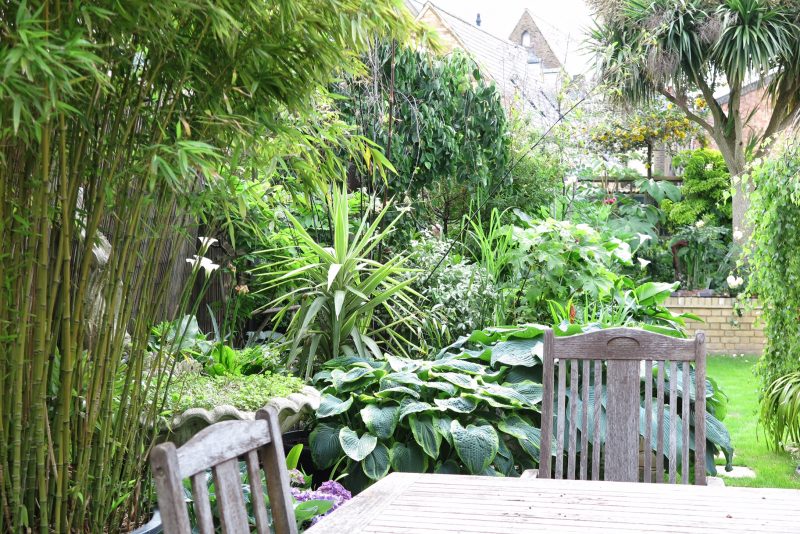
Mary Mackay’s garden (Garden 4) combines cordylines, bamboo and other large plants.
5) Many plants grow well in the shade
If you read a plant catalogue, you may think that full sun is essential for a beautiful garden. Most plants seem to have ‘full sun’ or ‘full sun or partial shade’ as their growing conditions.
‘I think it’s like labels on clothes saying ‘dry clean only’,’ says Posy. ‘Alot of plants do surprisingly well in shady spots.’
‘Right plant, right place’ is a gardening mantra – and it works. But the ‘right place’ doesn’t always have to mean full sun.
Because it is surrounded by walls and is so narrow, Genevieve’s garden is very shady and yet the list of plants growing well is long: choisya, sarcococca confusa, violets, Japanese anemones, a camellia that flowers for three months a year, an azalea in a pot, hydrangeas, cyclamen, hosta, hellebore, persicaria, clematis, foxgloves, crocosmia, several roses, daphne, fuschias, thyme, several different geraniums, oxalis, trachelospermum and many more.

Genevieve’s garden is very shady as it is bounded by walls and buildings and is very narrow, but the planting is abundant.
You may not realise how sunny your garden actually is. If your main time for sitting outside is in the evening, your garden may be mainly in shadow, but at midday, it may perhaps be almost wholly sunny. Many plants do reasonably well on about 4 hours of direct sunshine a day. A shady garden needs less watering.
Trial and error is the only way to find out if plants will be happy in a shady spot. Sun isn’t the only factor in how well a plant will grow.
6) You can have privacy even if you are overlooked
The tension between shade and privacy in long thin town gardens is a source of great friction between neighbours. One side wants its privacy and the other feels their garden is compromised by trees or vigorous climbers.
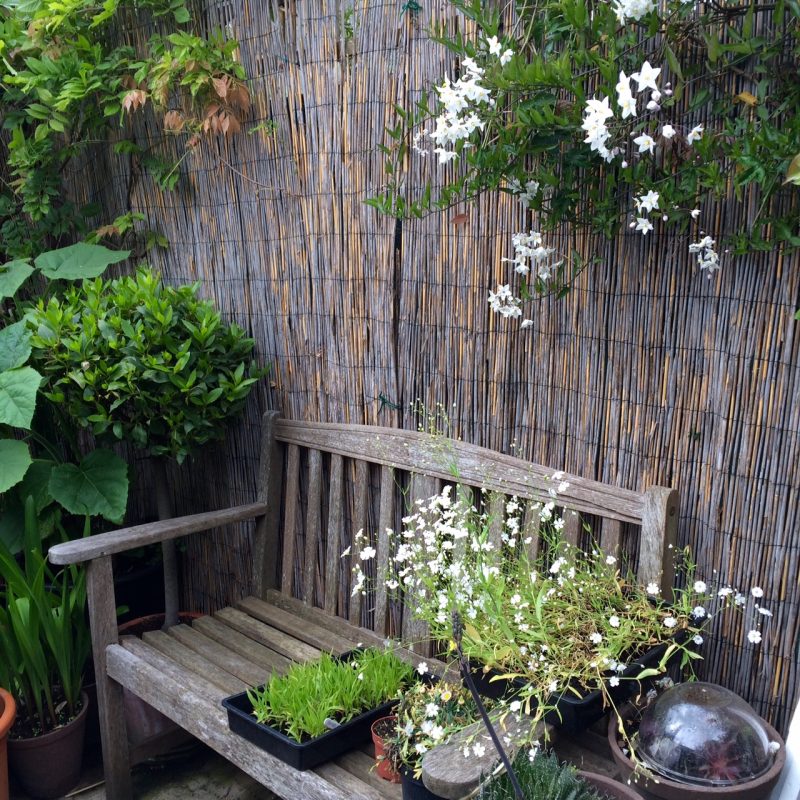
Mary Mackay has created a private area at the bottom of her garden, surrounded by bamboo trellis and reached by an arch.
The key is not to expect privacy in the whole garden – you do live in a town after all, but to establish where you would like to sit and to make a small area private, using trellis, a pergola or a single tree. And if your neighbour does the same, be tolerant and plant shade-loving plants (or use the shady area for storage).
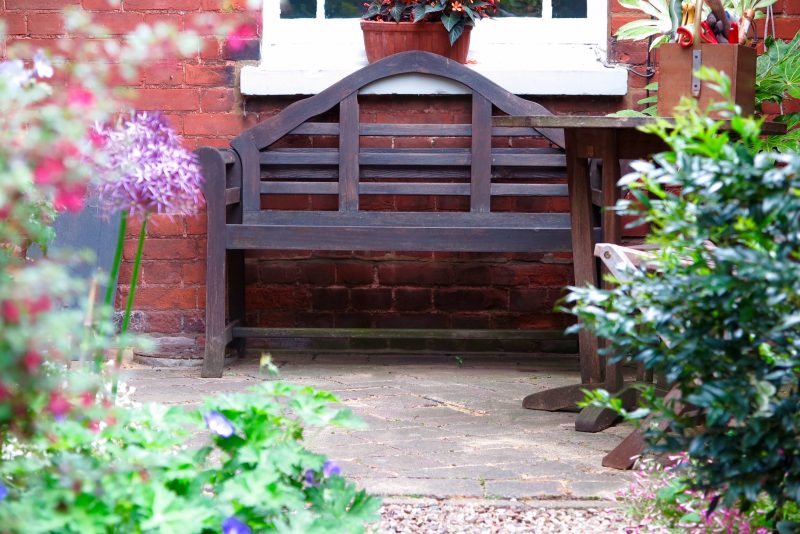
The most private place in a narrow town garden is often close to the house, like in Genevieve’s garden.
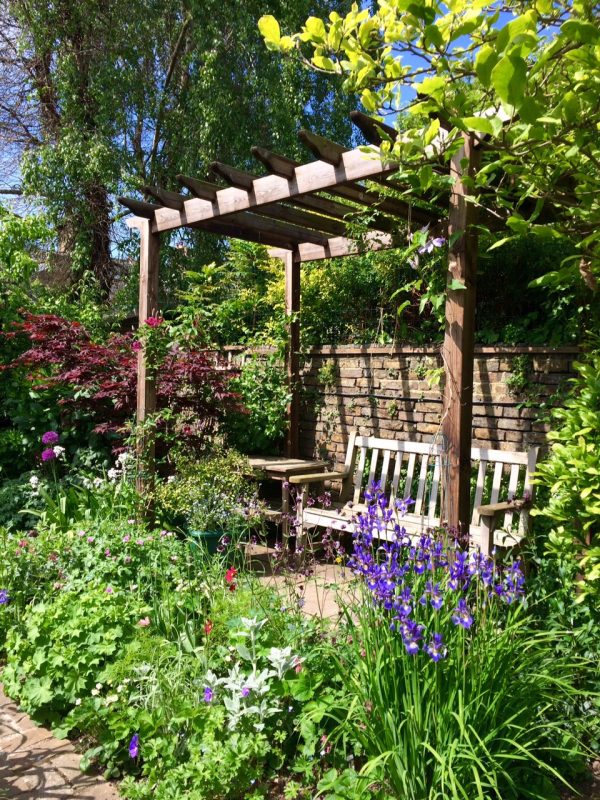
A pergola offers privacy at John and Mary Cousins’ house (Garden 21). Pergolas, like sheds, can be up to up to 2.5 metres (8ft 2″) high if they are near or on your garden wall.
7) Blur the edges (or the end of the garden) with planting
Town gardens used to have a fairly standard format. They had a lawn or terrace in the middle and planting round the edges.
But that makes them look smaller, because it creates defined boundaries.
Planting in clumps – having beds across the garden rather than in thin beds down the sides – blurs the edges because your eye doesn’t quite know where the garden ends. Here are two examples where clumps make the garden seem bigger or more luxuriant.
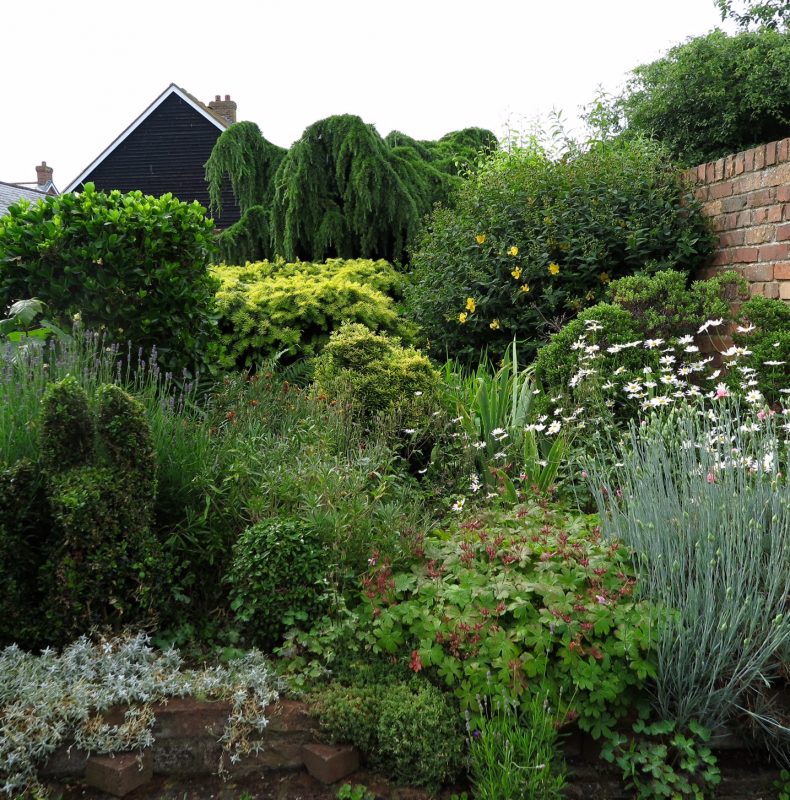
A mixed – mainly evergreen – planting at the end of Julie Holbrook’s garden (Garden 13) means you don’t know exactly where the garden ends.
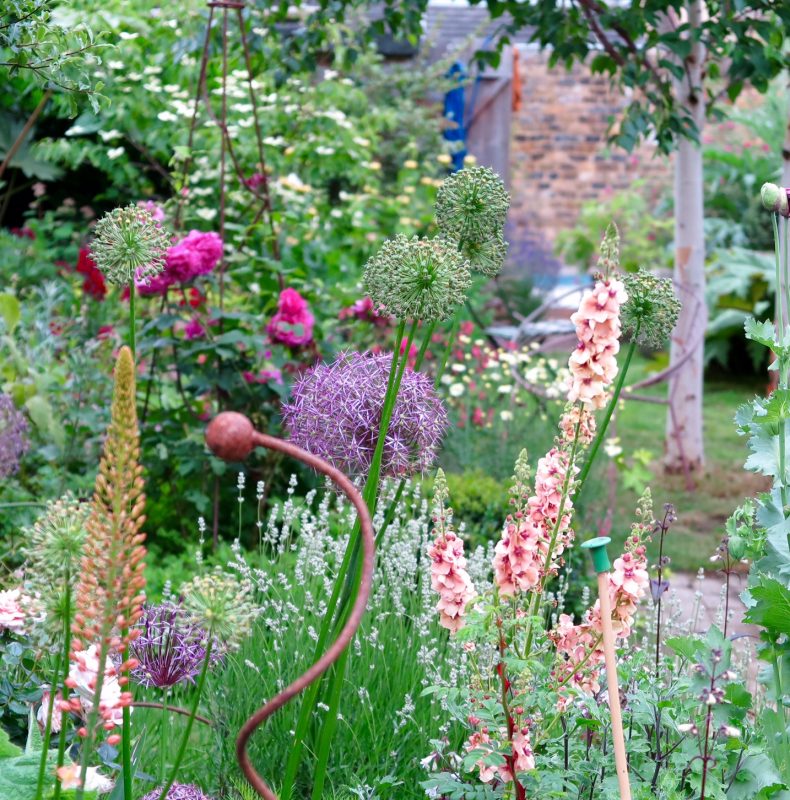
The main planting bed in front of Posy’s house has lots of verticals. You can see that there is garden beyond, but you can’t quite see how far it stretches.
8) In a small space you can experiment
Julie Holbrook has done most of the hard landscaping in her garden herself, laying the brick terrace, making a brick barbecue and also creating a water feature out of Kent peg tiles and roofing lead.
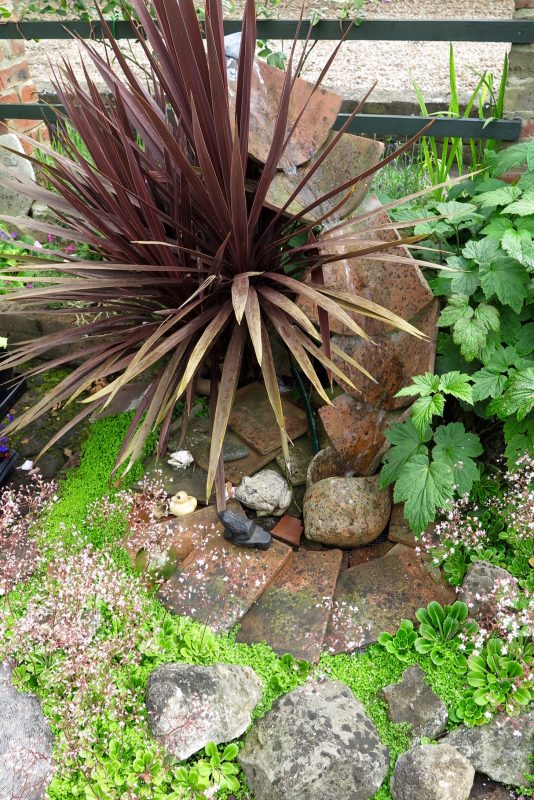
The Kent peg tiles are layered in a ‘waterfall’ around the cordyline. Water flows down from a concealed tap at the top.
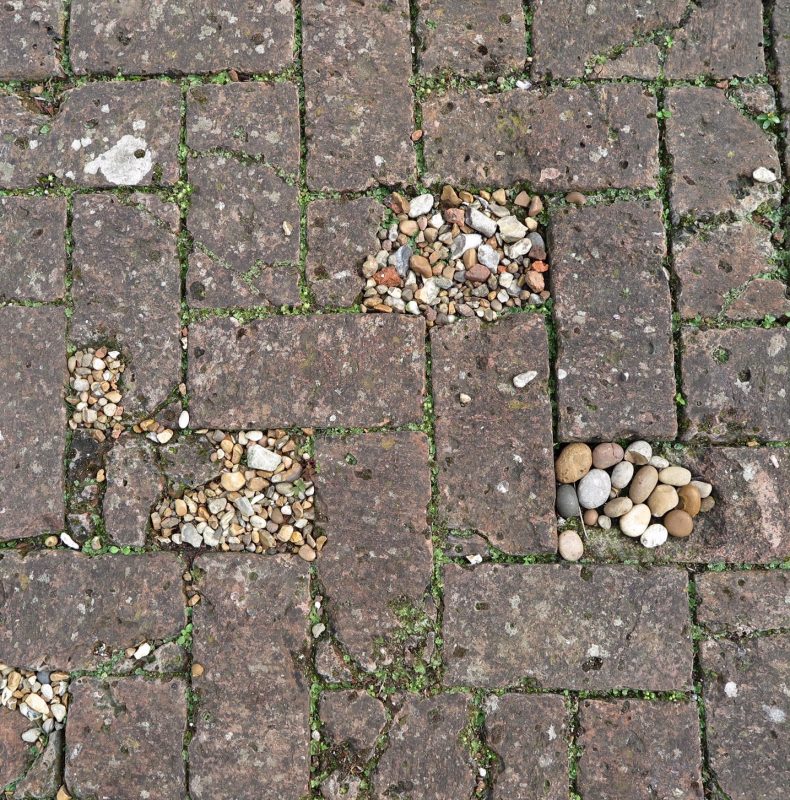
Julie used old brick (her house dates back to the 17th century) and pebbles in her terrace.
And, because not all the gardens in the Faversham Open Gardens are long thin town gardens, I am going to end this with one that isn’t:
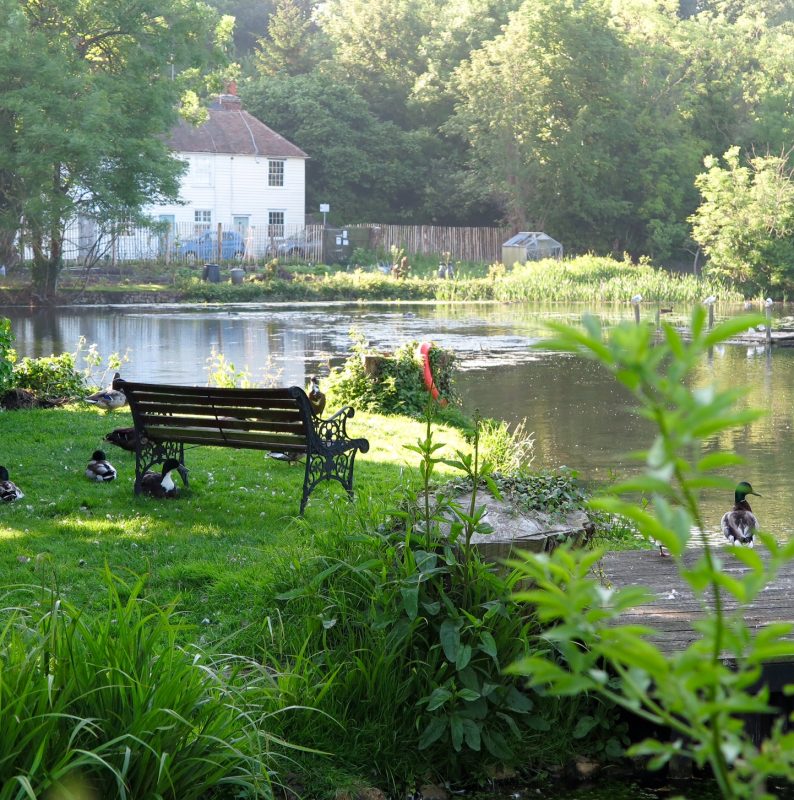
Liz and Tony Sharp’s garden (Garden 33) is, in fact, quite long and narrow in some ways, but, unlike most town gardens, it ends at the beautiful Stonebridge Ponds. The allotments you can just glimpse across the water are also open on June 26th.
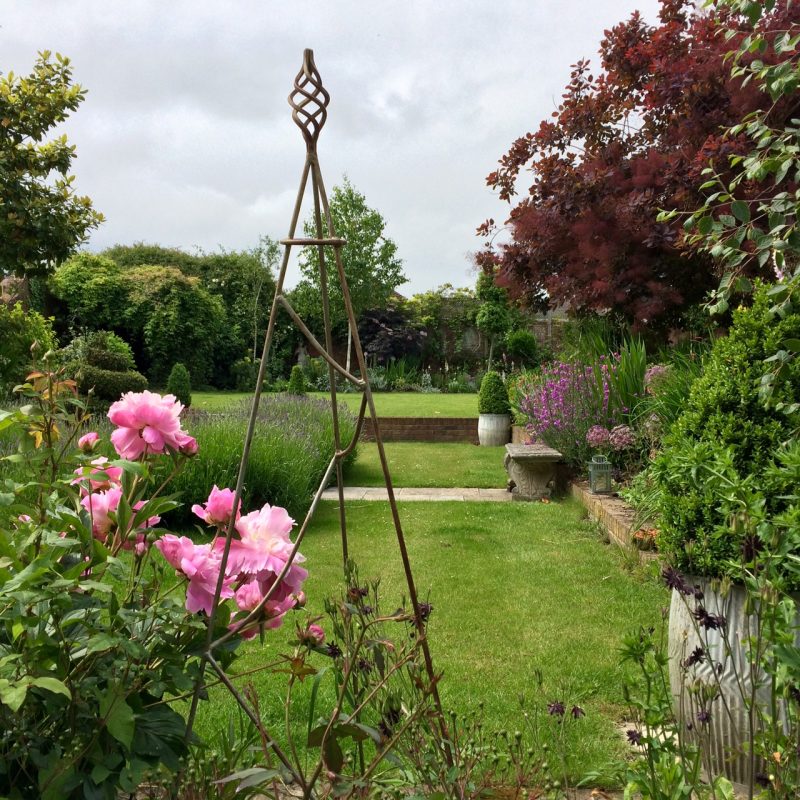
And we are Garden 29 – do say hello.
Tickets for the Faversham Open Gardens & Garden Market Day on June 26th are £6 and £10 for 2, on sale from the Fleur-de-Lis, 13 Preston Street, Faversham, ME13 0NS or from the Market Place. There are also 30+ stalls selling plants, garden memorabilia, vintage and modern gardenware plus lots more. Do come! And please spread the word by sharing this using the buttons below, thank you!
The post 8 effective tips for narrow town garden success appeared first on The Middle-Sized Garden.
from The Middle-Sized Garden http://www.themiddlesizedgarden.co.uk/6-easy-tips-narrow-town-garden-success/
No comments:
Post a Comment